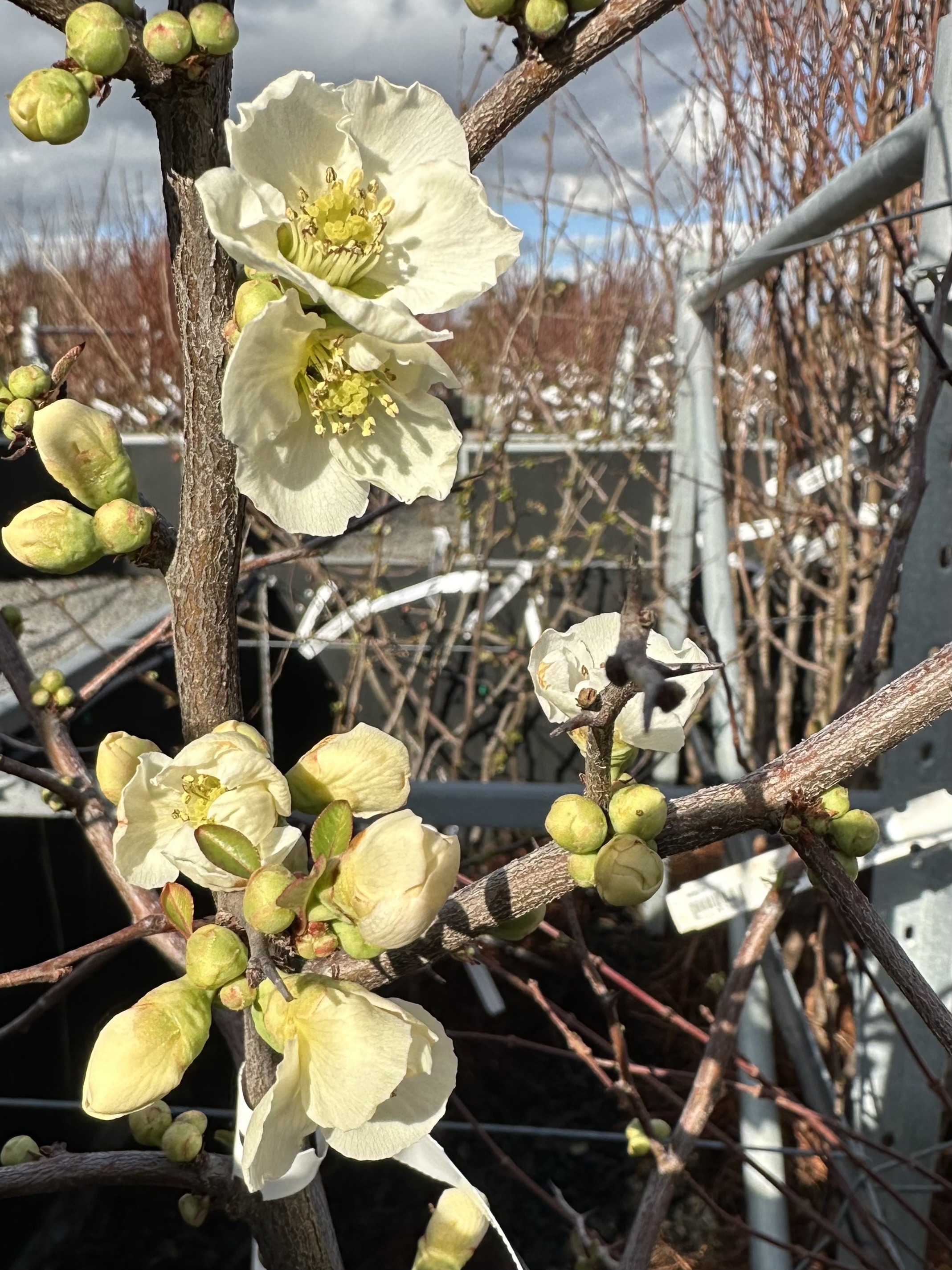The Flowering Quince, Chaenomeles speciosa, is a much-loved woody deciduous, at times semi-evergreen, shrub growing to about 2 m tall and a similar width. Flowers appear in clusters on older wood in winter and early spring usually before the leaves appear. Flowers are generally red, with many cultivars available in shades of red, pink and white.
The small (about 3-6 cm diameter) hard green-yellow and speckled fruit resemble a quince and can be used in the same way as the true quince (Cydonia oblonga). Once the edible fruit are cooked they transform into a delightful soft pink and perfumed fruit full of flavour and can be preserved in jam, sauce, candied or for flavouring desserts. They can also be cooked with other fruit such as pears or apples to share the aromatic flavour.
The Flowering Quince fruits are fragrant and can be placed in a decorative or fruit bowl to perfume a room, and put in the linen press to scent sheets and towels. The thorny branches are interlacing forming great nesting habitat for small birds. The late Peter Valder in his seminal “The garden plants of China” notes that the short-stalked flowers on bare twigs on Chaenomeles are evocative of oriental art. This native of China can be a useful cut flower in winter, a stunning garden shrub, informal hedge, can be trained against a garden wall, and grown as a bonsai (it’s a favourite in Japan).
They can be planted in any soil and do best in full sun. They are frost tolerant and very hardy. Trim after flowering to keep neat or leave them to form their own shape.
The Flowering Quince Chaenomeles speciosa has a number of other common names including Japonica, Chinese Flowering Quince and Japanese Flowering Quince. Both the names Chinese Quince and Japanese Quince are misleading. An unrelated plant, Pseudocydonia sinensis is more commonly and correctly known as the Chinese Quince. The name Japanese Quince more accurately refers to Chaenomeles japonica. Chaenomeles and Pseudocydonia are in the rose family Rosaceae.
References:
- Valder, P. (1999) The garden plants of China. Florilegium, Balmain NSW.
- Mabberley, D. J. (2000) The plant-book: a portable dictionary of the vascular plants (2nd edition). Cambridge University Press, UK.
- Lord, E. E. and Willis, J. H. (1982) Shrubs and trees for Australian gardens (5th ed). Lothian Publishing Company, Melbourne.
- Glowinski, L. (1997) The complete book of fruit growing in Australia. Lothian, Port Melbourne, Australia.
- HortFlora: Horticultural Flora of South-eastern Australia. Royal Botanic Gardens Victoria. Accessed 25/4/2025
Image Chaenomeles speciosa 'Nivalis' Flowering Quince: Copyright Heritage Fruit Trees

